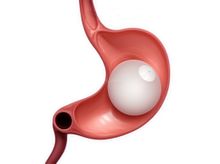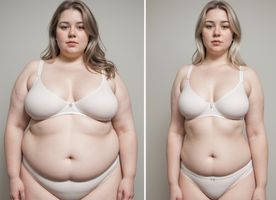Gastric Balloon Treatment in Thailand
Search and Compare the Best Clinics and Doctors at the Lowest Prices for Gastric Balloon Treatment in Thailand






Gastric Balloon Treatment at Sikarin Hospital in Bangkok, Thailand





Gastric Balloon Treatment at Bangpakok 9 International Hospital in Bangkok, Thailand





Gastric Balloon Treatment at Asia Cosmetic Hospital in Bangkok, Thailand





Gastric Balloon Treatment at Rattinan Clinic in Bangkok, Thailand





Gastric Balloon Treatment at B.Care Medical Center Hospital in Bangkok, Thailand
Our partner clinics in are accredited by the following associations












































































































































Compare Before & After Photos of Gastric Balloon Treatment








No Time?
Tell us what you're looking for and we'll reach out to the top clinics all at once
WHY US?




















































































































































No Time?
Tell us what you're looking for and we'll reach out to the top clinics all at once
What does a Gastric Balloon Treatment Procedure Involve?
The Gastric Balloon Treatment includes putting an inflatable scientific tool (or 'gastric balloon') in your belly. The method is generally carried out under sedation. This non-surgery involves swallowing a capsule connected to a skinny tube. Once within the stomach, the balloon is filled with saline solution, making you experience full subsequently reducing meals consumption.
However, it's really worth noting that the gastric balloon is a temporary solution--it is generally removed six months after set up. Post-procedure, you should keep a healthy diet and workout regularly. Remember, the gastric balloon isn't always a one-size-fits-all solution--its suitability and effectiveness can vary primarily based on man or woman health instances.
How Long Should I Stay in Thailand for a Gastric Balloon Treatment Procedure?
Typically, the gastric balloon process can be finished in one day. Thus, there is generally no requirement for an overnight live at the health facility. However, because of the sedation used at some point of the method, it is recommended to have a person accompany you later on.
If you are an out-of-town patient, it is crucial to take journey time and proximity to the health center into attention. Scheduling at least more than one day in Thailand might permit for consultation earlier than the technique, time to relax and get better, and a final check-up before you leave.
What's the Recovery Time for Gastric Balloon Treatment Procedures in Thailand?
Recovery time for a Gastric Balloon Treatment can range relying on the character's standard fitness, how properly the technique went, and the individuals response to healing. Most people go through some stage of discomfort in the initial days following the method, with nausea and vomiting being commonplace. Normally, those signs and symptoms subside inside per a week because the body adjusts to the gastric balloon.
As the Gastric Balloon Treatment is nonsurgical, you might be capable of resuming typical day-by-day activities within a couple of days. A follow-up appointment along with your healthcare professional is commonly scheduled within a week of the procedure, to evaluate your recuperation and provide nutritional pointers. Speak with your healthcare professional for a more correct estimation of restoration times based on your particular circumstances.
What sort of Aftercare is Required for Gastric Balloon Treatment Procedures in Thailand?
While Gastric Balloon Treatment can offer a jumpstart on weight reduction, it's far most effective when combined with a basic lifestyle transformation. Aftercare normally includes nutritional counseling to help instill wholesome eating behavior. It offers training on component control, picking healthy meal, and eating nutritionally balanced food.
Beyond nutritional adjustments, incorporating normal bodily routine is a critical element of retaining weight loss achieved through Gastric Balloon Treatment. Your healthcare issuer would possibly advocate operating with a health professional to create a personalized exercise routine. Regular observe-up visits also are usually part of the aftercare system, to display progress and deal with any concerns that could arise.
What's the Success Rate of Gastric Balloon Treatment Procedures in Thailand?
The success rate of Gastric Balloon Treatment can vary widely, relying in large part at the commitment of the man or woman to make large life-style adjustments. On common, patients can expect to lose approximately 15% to twenty-five% in their extra body weight during the six months the balloon is in vicinity.
However, the lengthy-time period fulfillment of this procedure relies upon on preserving the life-style modifications initiated all through the balloon treatment length. Those who return to dangerous eating conduct after the balloon is eliminated may want to regain the misplaced weight. It is important, therefore, to take a look at Gastric Balloon Treatment as an initial step in a long-time period weight control strategy.
Are there Alternatives to Gastric Balloon Treatment Procedures in Thailand?
There are lots of weight reduction alternatives if Gastric Balloon Treatment doesn’t appear like the proper choice for you. Other non-surgical alternatives encompass dietary adjustments, regular exercising, and behavioral therapy. In some cases, weight reduction medications can be advocated.
If you are looking for more invasive options, bariatric surgical methods which includes gastric skip, adjustable gastric banding, or sleeve gastrectomy is probably more suitable. However, it is vital to discuss together with your healthcare issuer to pick out the option that pleasant aligns along with your character fitness desires, lifestyle and weight loss goals.
This information has been accurately sourced and verified by a medical professional for its accuracy, however, we strongly recommend you to consult with your doctor before pursuing medical procedures overseas.



